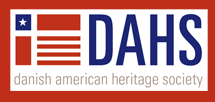Keywords
Scandinavian, Lutherans, Grundtvigians, Evangelical
Abstract
When I discovered that my great-grandfather and his wife had participated in the founding of the Dagmar settlement in Montana in 1906, I did not expect my initial interest in this to lead to a research grant from the DAHS, enabling me to dive even deeper into their adventure, for which I am very grateful. My fascination with their story derives from its connection to the collective history of Danish America. In this sense, my ancestors acted as individuals, but their identity navigation took place in a cultural landscape that changed due to larger developments. As a result, they can teach us something about their time – and vice versa. While making choices along their way, two objectives seem to have guided them in their navigation: a search for soil and a striving for salvation. As a reflection of challenges that are also implicit in contemporary waves of migration, and perhaps rooted in the human condition itself, their “beacons” consisted of a desire for both material well-being and meaning. This brought them to the founding of a Danish settlement in Dagmar, Montana which provided them with free land, a process that was documented in Part I of this article in volume 40, number 1 of The Bridge, while this article deals with the more pressing question of whether living in Dagmar could also ensure their salvation.
Recommended Citation
Jakobsen, Jakob
(2017)
"Soil and Salvation: Danes in Montana, 1906-10. Part II: Salvation,"
The Bridge: Vol. 40:
No.
2, Article 7.
Available at:
https://scholarsarchive.byu.edu/thebridge/vol40/iss2/7
Included in
European History Commons, European Languages and Societies Commons, Regional Sociology Commons


